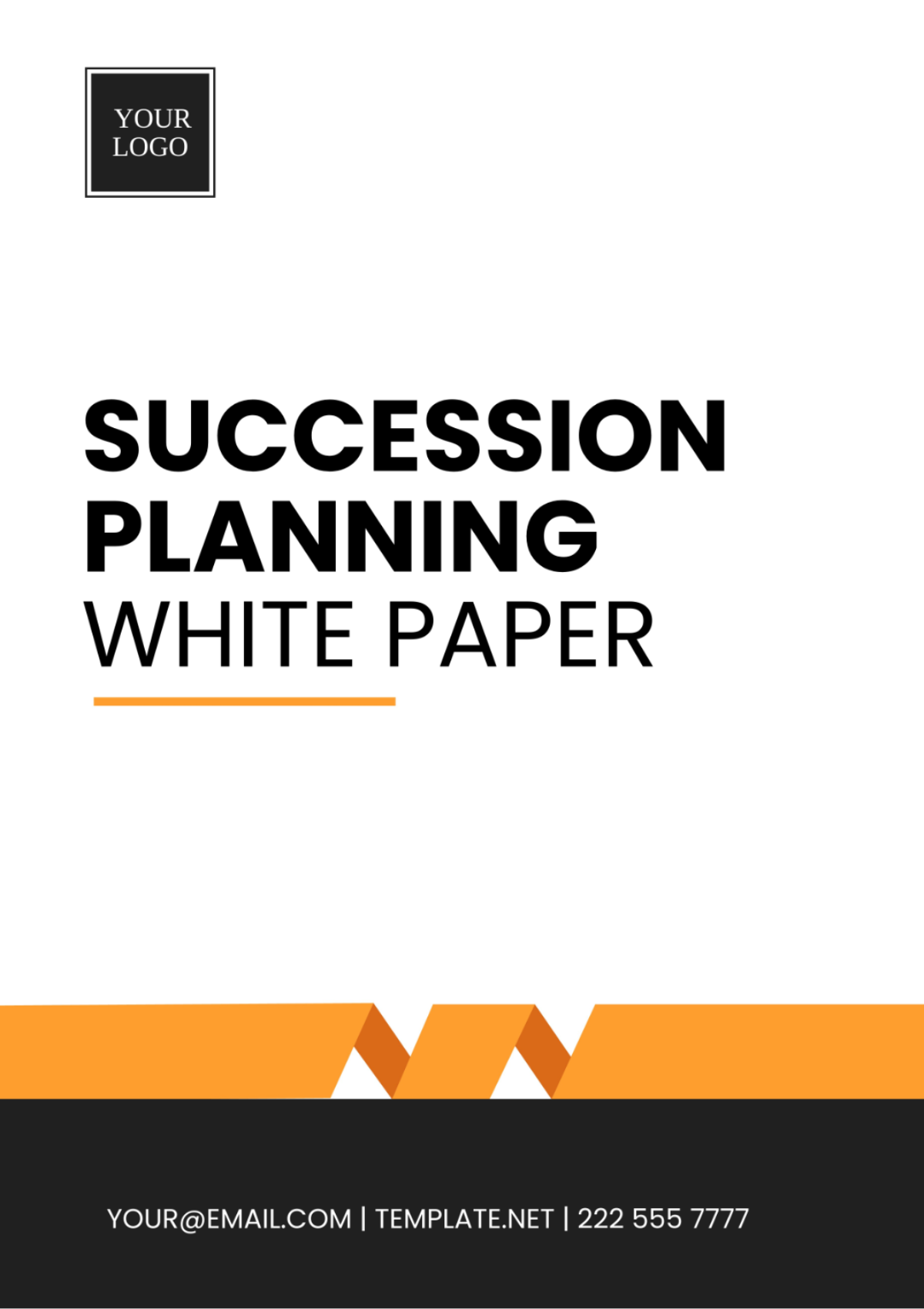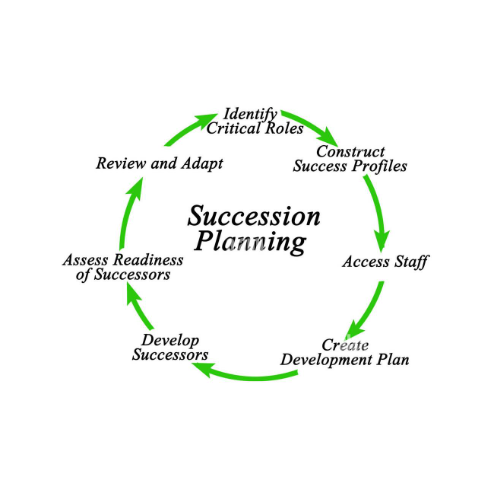Free Succession Planning White Paper

Ensuring Organizational Continuity
Prepared by: [YOUR NAME]
Company: [YOUR COMPANY NAME]
Department: [YOUR DEPARTMENT]
Date: [DATE]
I. Introduction

In today's dynamic business landscape, [Your Company Name] recognizes the critical importance of succession planning in ensuring the continuity and sustainability of organizational success. This white paper explores the key components and strategies involved in effective succession planning.
II. Understanding Succession Planning
Succession planning is not merely about filling vacant positions; it's about identifying and developing talent [Your Company Name] needs to thrive in the future. It involves:
Anticipating future talent needs
Identifying high-potential employees
Developing leadership pipelines
Ensuring smooth transitions during key personnel changes
III. Benefits of Effective Succession Planning
A robust succession planning strategy offers several advantages for [Your Company Name], including:
Reduced Disruption: Smooth transitions minimize disruptions in operations.
Talent Retention: Employees are more likely to stay with a company that invests in their growth.
Enhanced Performance: Continuity in leadership leads to better performance and strategic alignment.
Risk Mitigation: Preparedness for unexpected departures mitigates risk.

IV. Key Components of Succession Planning
Successful succession planning involves a comprehensive approach encompassing:
Talent Identification: Identifying individuals with high potential for future leadership roles.
Development Programs: Implementing training and development initiatives to groom future leaders.
Mentorship and Coaching: Pairing high-potential employees with experienced mentors.
Succession Policies: Establishing clear policies and procedures for succession management.
V. Implementing a Succession Planning Program
To effectively implement a succession planning program at [Your Company Name], follow these steps:
Assessment: Assess current and future talent needs.
Identification: Identify key positions and potential successors.
Development: Provide training and development opportunities.
Monitoring: Continuously monitor and evaluate the effectiveness of the program.
Adjustment: Adjust the plan as needed based on changing organizational needs.
VI. Case Studies
Investigate and study in-depth cases of real-world examples where successful succession planning initiatives have been effectively implemented by prominent organizations across diverse industries.
VII. Conclusion
In conclusion, effective succession planning is vital for [Your Company Name] to ensure organizational continuity and long-term success. By investing in talent development and strategic planning, [Your Company Name] can build a resilient leadership pipeline that drives sustainable growth in the ever-evolving business landscape.
VIII. About the Author
[Your Name] is a [Your Job Title] at [Your Company Name], specializing in [Your Department] strategies and organizational development.
- 100% Customizable, free editor
- Access 1 Million+ Templates, photo’s & graphics
- Download or share as a template
- Click and replace photos, graphics, text, backgrounds
- Resize, crop, AI write & more
- Access advanced editor
Optimize your organizational continuity with the Succession Planning White Paper Template from Template.net. This comprehensive document simplifies the creation of informative white papers on succession planning strategies, methodologies, and best practices. Crafted for flexibility, it's editable and customizable, allowing you to tailor every detail to your organization's unique succession goals and insights. With our Ai Editor Tool, making adjustments is seamless, ensuring your white paper effectively communicates your succession planning strategies and solutions. Trust Template.net to provide the framework for presenting your succession expertise professionally and comprehensively. Simplify your knowledge-sharing efforts and secure your organizational future with confidence, knowing you're supported every step of the way.





























